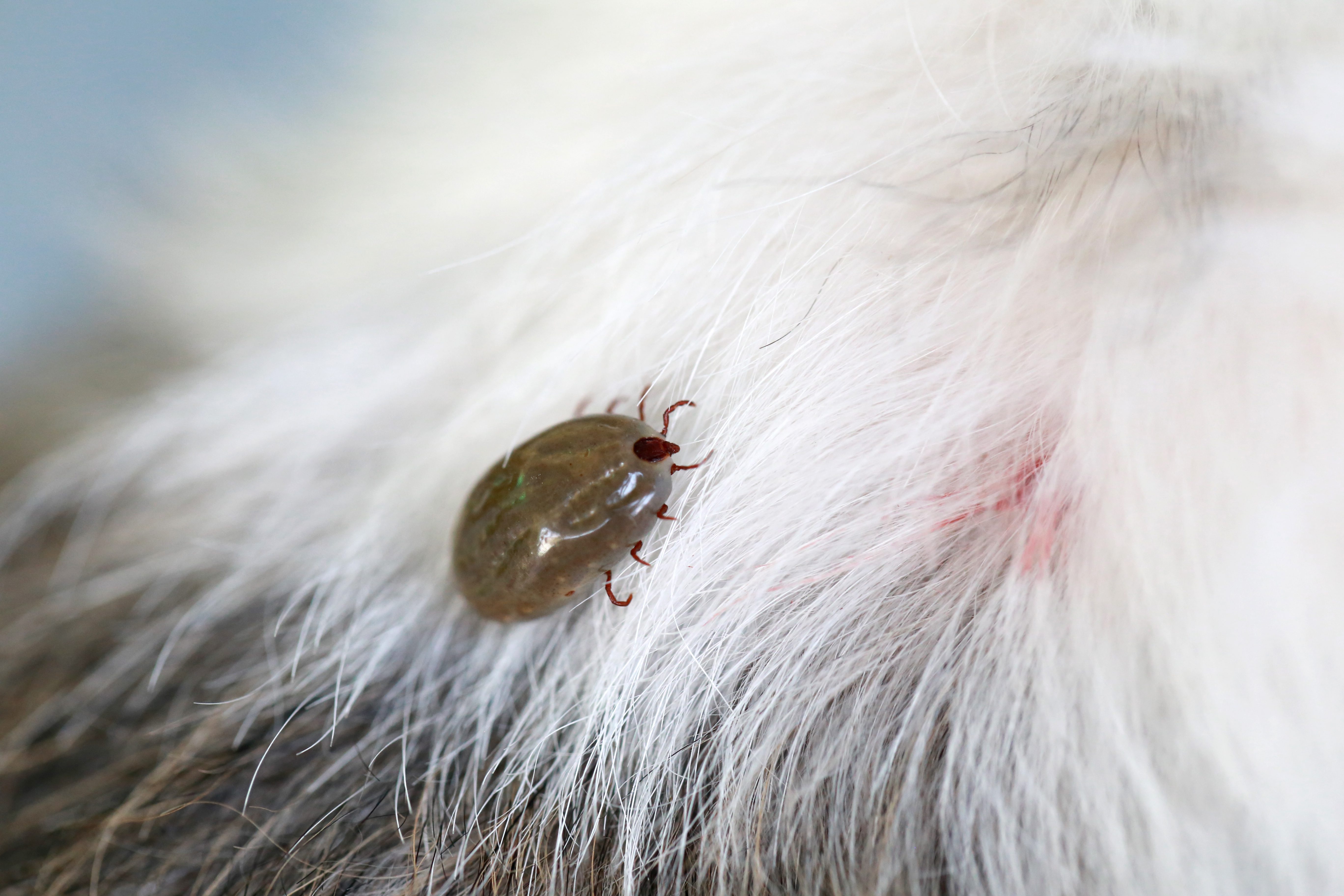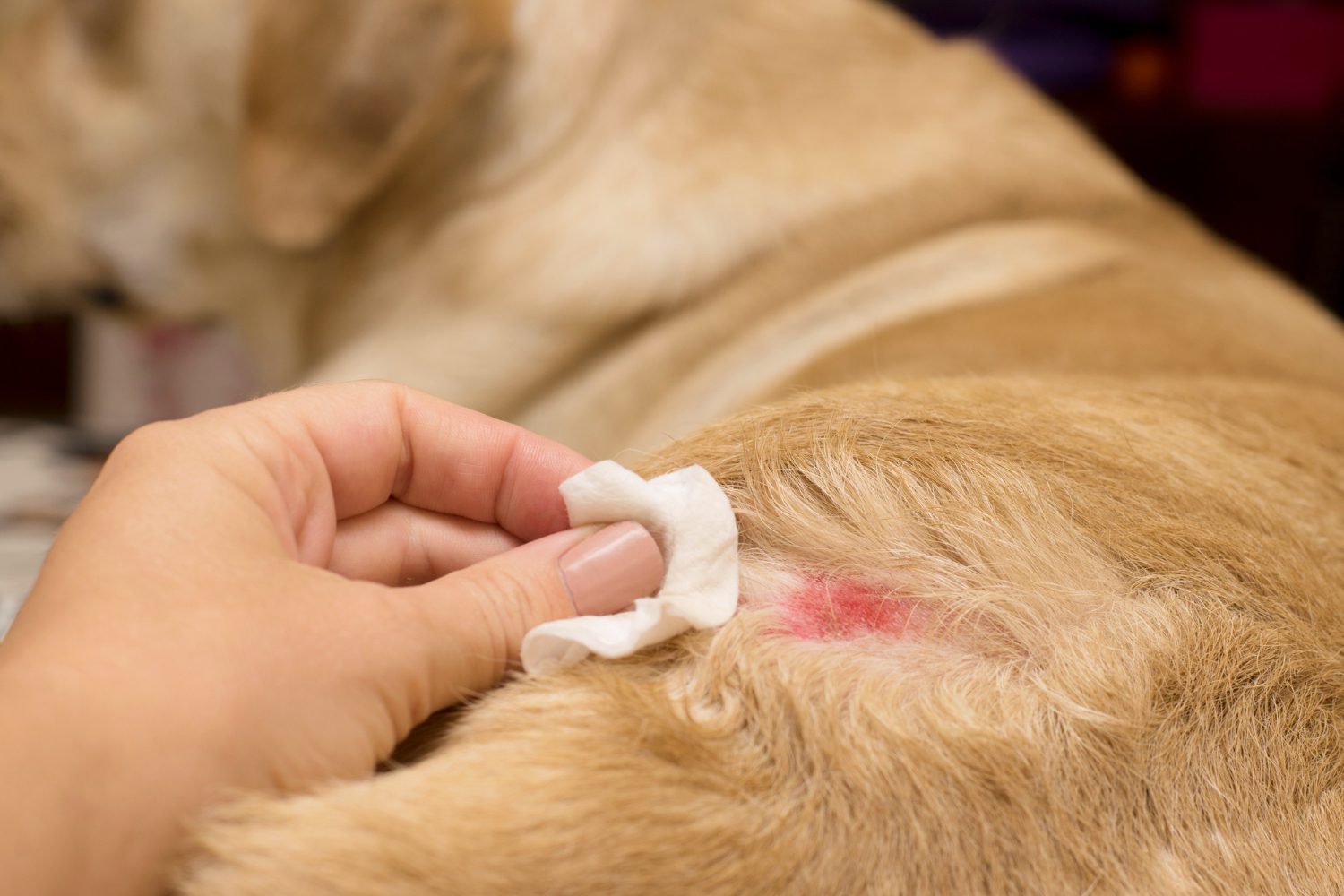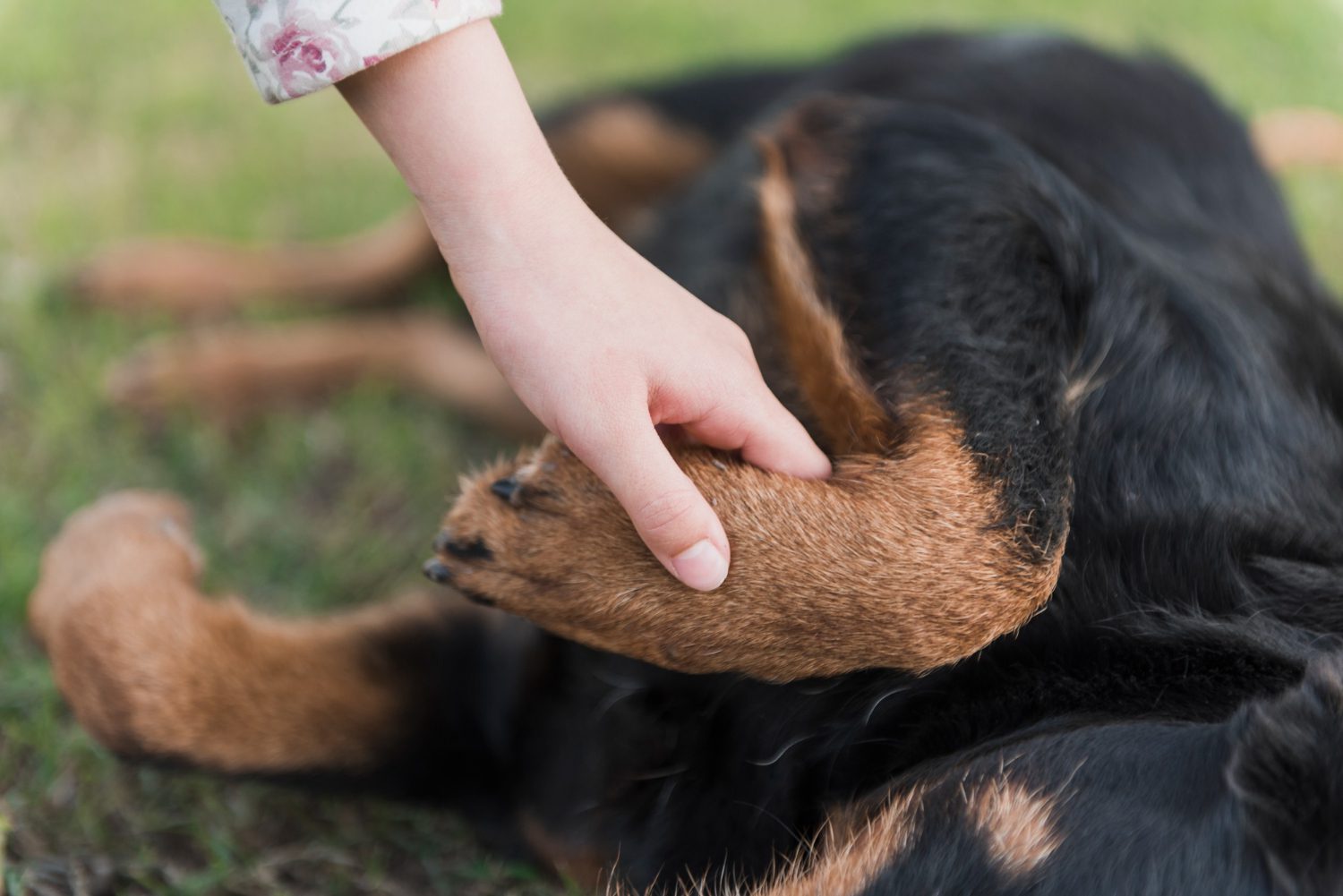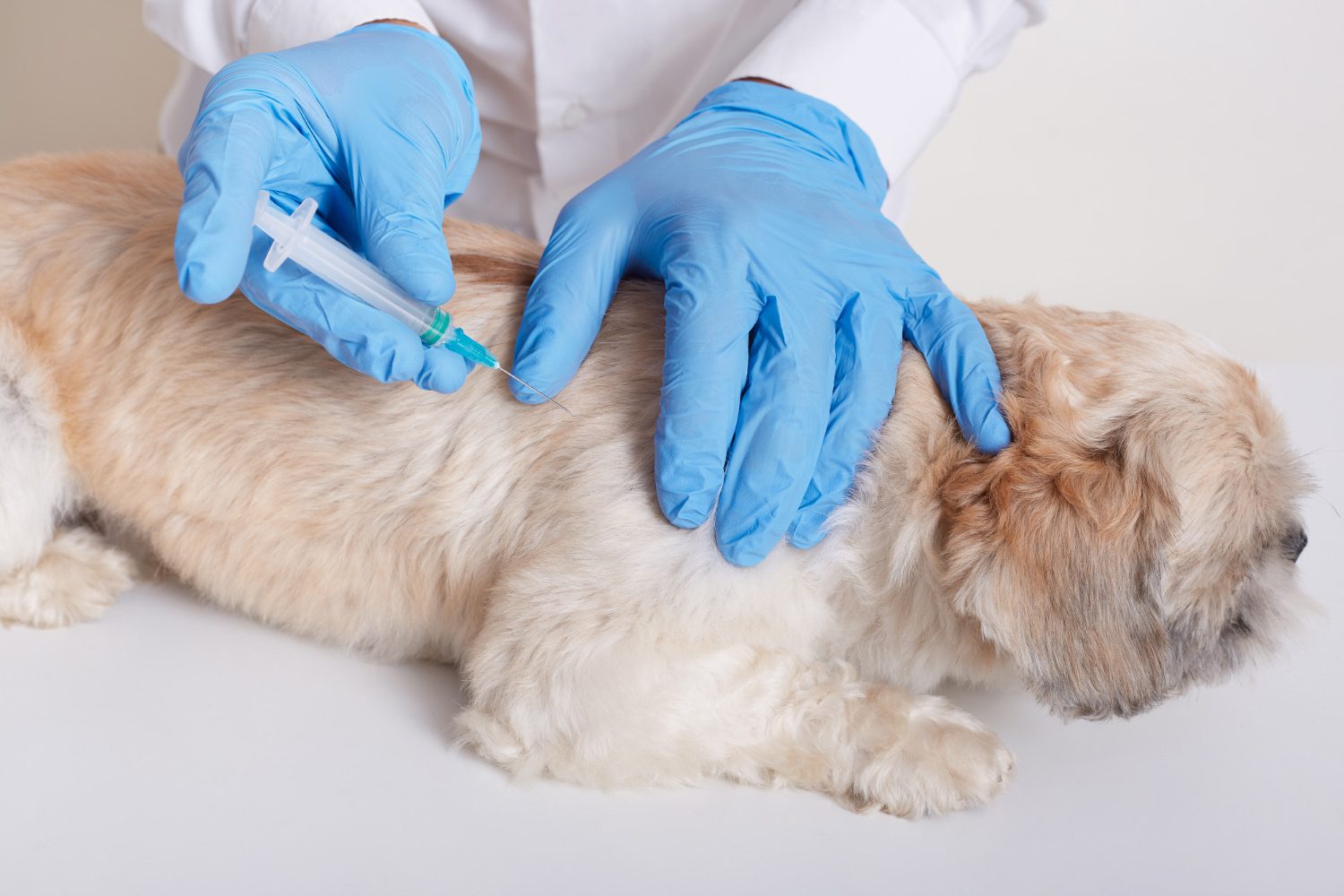Ticks on Dogs: How to Remove and Prevent

By Evelyn Harcourt
juillet 08, 2025 - 1 min read
Ticks are a common parasite throughout the UK. Any dog is susceptible to ticks, but dogs with dense, curly coats and those who spend a lot of time outdoors in woodland and long grass are more likely to be affected.
This article explores how to spot and remove a tick, how ticks can be prevented and why tick prevention is so important for your furry friend. As ticks can affect humans, too, we must stay on top of them.

Understanding Ticks and Why They Matter
Parasites that resemble little spiders or ticks can be seen with the naked eye and become large and squishy when filled with blood.
What Are Ticks?
Ticks are blood-sucking arthropods with eight legs. There are many different species, and certain ticks live on specific animals (their hosts). They feed off blood and latch onto skin for several days.
Tick Lifecycle
Ticks progress through four life phases: egg, larva, nymph, and adult. The life cycle can take several years to complete.
Common Tick Species Affecting Dogs
In the UK, when it comes to our dogs, we mainly deal with Ixodes ricinus (the sheep tick) and Ixodes hexagonus (the hedgehog tick). As a rule of thumb, the sheep tick is found in rural areas while the hedgehog tick is seen in the suburbs and urban locations.
The Brown Dog tick is not native to the UK but may be detected in pets that have recently travelled abroad.
Tick-Borne Diseases
Ticks can transmit several blood-borne diseases to dogs, including Lyme Disease, Ehrlichiosis and Anaplasmosis. These are all bacterial infections that can cause a wide range of symptoms.

Risk Factors and Peak Tick Seasons
There is a higher risk of catching ticks at certain times of the year, and certain dogs are more at risk.
Geographic Hotspots and Habitats
In the UK, most ticks are found in wooded areas and on long grass and shrubs. Humid vegetation provides an ideal home. They rely on wildlife such as deer and hedgehogs to survive, so they are most prevalent where these animals are found.
Seasonal Activity Patterns
The peak season for ticks that affect dogs includes Spring (mainly April and May) as well as Autumn (mainly October and November). Their seasonal activity has expanded due to recent climate change.
High-Risk Breeds, Ages, and Lifestyles
Poodle breeds and those with curly coats seem at highest risk for ticks. Cairn Terriers are also known to be very prone to them. Males, dogs with floppy ears and dogs with a medium-length coat are the most affected.
Of course, spending more time outdoors and pursuits such as hunting or hiking, will also play a role.
Spotting a Tick on Your Dog
Knowing how to identify a tick is a great skill. Many owners confuse nipples and warts with ticks.
Routine Tick-Check Techniques
Get into the habit of checking your dog over when it comes in after being outdoors. Check its ears, face, neck, and paws. Remember to part the fur and look at the skin.
Red Flags After a Tick Bite
Signs of tick-borne disease do not begin immediately. If the dog has contracted an infection, you may start to see signs several days or even weeks later. These symptoms can include a shifting lameness, lethargy, and a fever that comes and goes.
If your dog shows any concerning signs, such as weakness, collapse, or difficulty breathing, it is best to contact an emergency vet.

Safe Tick Removal: Step-by-Step Guide
Knowing how to remove a tick from home means it can be done rapidly, reducing the chance of disease transmission. Ticks must be attached for at least 24 hours to transmit a disease.
Essential Tools
A tick remover (tick hook) makes removing ticks easier, or tweezers can also be effective. You will also want an egg cup of strong alcohol/ethanol.
Proper Grasp and Extraction Method
With your dog properly restrained, grasp the tick's body close to the skin and steadily pull in a vertical direction. The mouth part should detach, and your dog should not feel any pain. You can then place the tick in the alcohol to kill it.
Do not squish the tick, as this can release infection.
Disinfecting the Bite Site
After, cleanse the skin using cotton wool and salt water. Monitor the area over the next few days for any swelling or redness.
What NOT to Do
Some websites may recommend burning a tick off, applying vaseline to try to suffocate it, or twisting it. These should all be avoided, as they can potentially hurt the dog or cause the tick to burrow further.
Post-Removal Care and Monitoring
After removing the tick, you’ll want to keep an eye on your dog to ensure there are no aftereffects.
Cleaning and Topical Treatments
You can bathe the area with salt water once daily for 2-3 days. If there is no sign of infection, you do not need to apply creams or ointments.
Recording the Bite and Tick Identification
There is a tick surveillance scheme in the UK that you can report a tick bite to. The UK Health Security Agency runs this service.
You also have the option of sending a tick to the UK government for formal identification.
Watching for Delayed Symptoms
It takes several days or even months for signs of tick-borne disease to manifest in a dog. Watch out for symptoms such as enlarged lymph nodes, lethargy, a shifting lameness, or a fever.
When to Consult Your Veterinarian
Contact your local vet if the skin that was bitten becomes hot, swollen, or starts to ooze, which could indicate an abscess. You will also need to contact them if your dog develops any signs of tick-borne disease.
Tick Prevention Strategies
It is far better to prevent ticks than to remove them, and this eliminates the risk of tick-borne disease transmission, which can be difficult to treat.
Monthly Preventatives
Your vet can prescribe a range of products, including topical spot-ons (such as those containing Fipronil, like Frontline), chewable tablets (such as those containing Alfoxolaner, like Frontpro), and collars containing Flumethrin (like Seresto).
You will want to prevent other parasites, such as fleas, intestinal worms, and lungworms, as well as ticks. So, you should discuss with your vet which product is most appropriate for your dog.
Environmental Control
It is also sensible to manage your dog’s lifestyle and environment to minimise their risk. This can include keeping your grass cut short and removing any piles of vegetation in your garden. You can also walk them in lower-risk areas and keep them on a lead.
Pre- and Post-Walk Precautions
Before going on a walk, you’ll want to ensure your dog’s tick preventative is up to date, particularly if you are going to an area known to have ticks. Once you are home, do a nose-to-tail check for any ticks.
Vaccinations
There is a Lyme Disease vaccine available in the UK, but it is not a core vaccine (unlike Leptospirosis, for example) and is not widely used at the moment.

Special Considerations for Ticks on Dogs
When it comes to ticks, there are a few extra things we want to keep in mind.
Puppies and Small Breeds
While uncommon, puppies and small breeds could have so many ticks that they become anaemic. The smaller the pet, the less blood volume they have.
Poodles (including their crosses) and Cairn Terriers are more prone to ticks.
Senior or Immunocompromised Dogs
Those with a less robust immune system may be more likely to develop tick-borne disease or abscesses where a tick has attached. These dogs especially need robust parasite prevention.
Long-Haired and Double-Coated Breeds
Ticks have more places to hide and are trickier for owners to detect, the more fur there is. This is a real concern as the longer a tick is attached, the greater the risk of spreading diseases.
Travelling to Tick-Endemic Areas
You’ll want to double-check your dog’s tick prevention and ramp up the tick checks when in a tick-endemic area. It is a good idea to bring along a tick remover. You may also consider vaccinating your pet against Lyme disease before travelling.
Learn More About Ticks on Dogs
Please feel free to contact us to talk further about your dog and ticks if you have any concerns.
You may want to take a look at our website for more details and interesting pet care advice for your canine companion.
Ticks on Dogs FAQs
Can ticks live indoors?
Yes, ticks can live indoors when attached to a cat or dog. Many ticks can even survive for quite some time off their host and in your home or garden.
How long before a tick transmits disease?
It is generally accepted that a tick has to be attached for at least 36 hours before it can transmit a disease to your dog.
Are natural remedies effective?
No, natural remedies should not be relied on. It is strongly recommended that pets use vet-prescribed anti-parasite medicine. Many natural remedies suggested online (such as essential oils) are actually harmful for pets.
Do winter months eliminate tick risk?
The cold does make ticks less active, but they are present all year round. Once the temperature is above freezing, they will be active.
Continue reading

Is Excessive Drooling An Emergency for Dogs?
Excessive drooling in dogs: causes, red flags, and when to call the vet.
Read article
Cat Tail Shaking: Is it an Emergency?
Learn whether your cat's tail shaking is normal, a warning, or urgent.
Read article
Eclampsia in Dogs: Symptoms, Causes and Treatments
Spot eclampsia fast, symptoms, causes, and vet treatments to protect mum and pups.
Read article